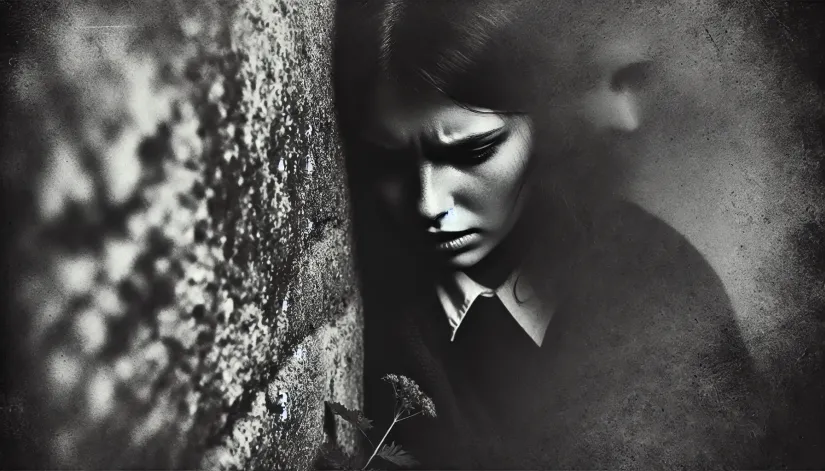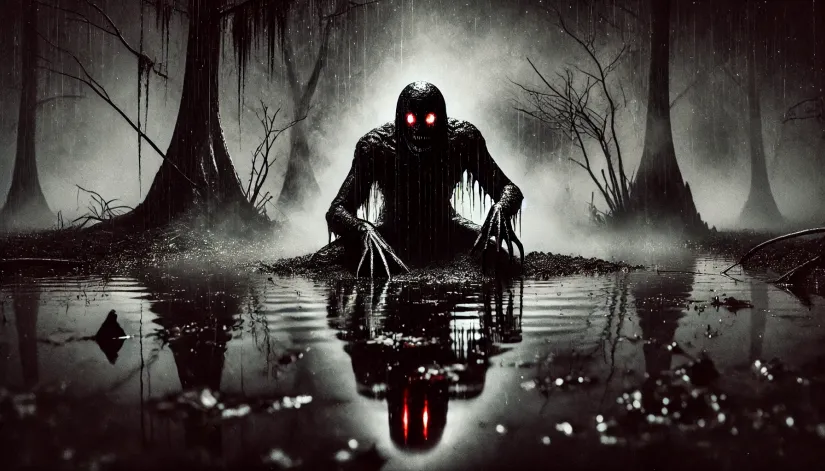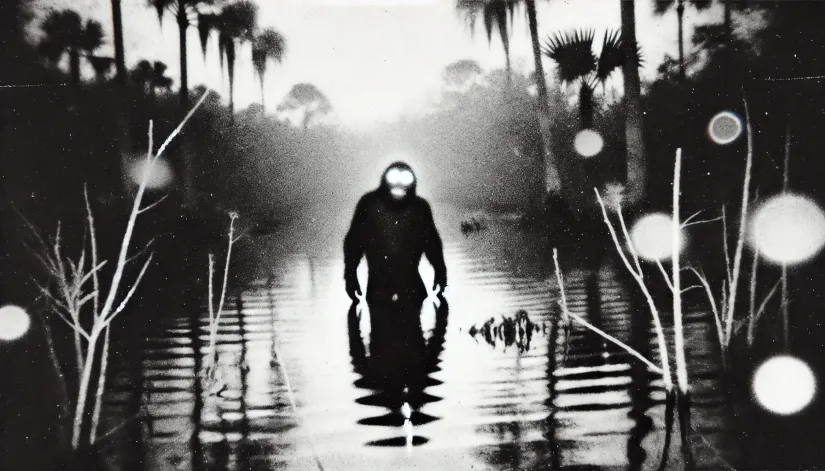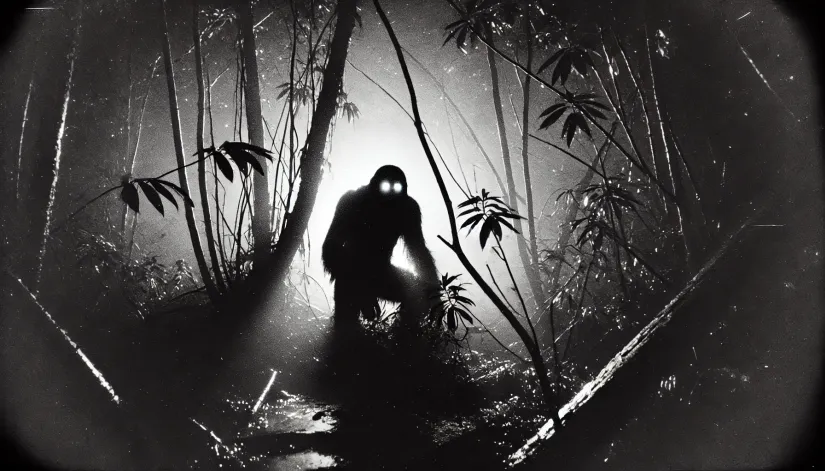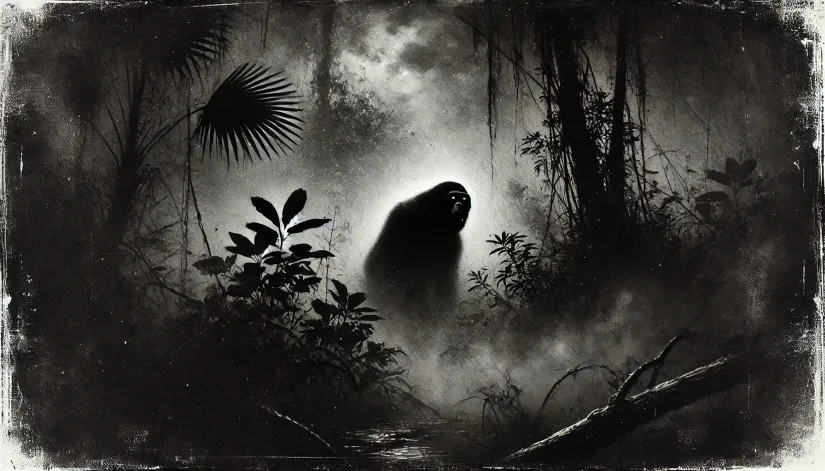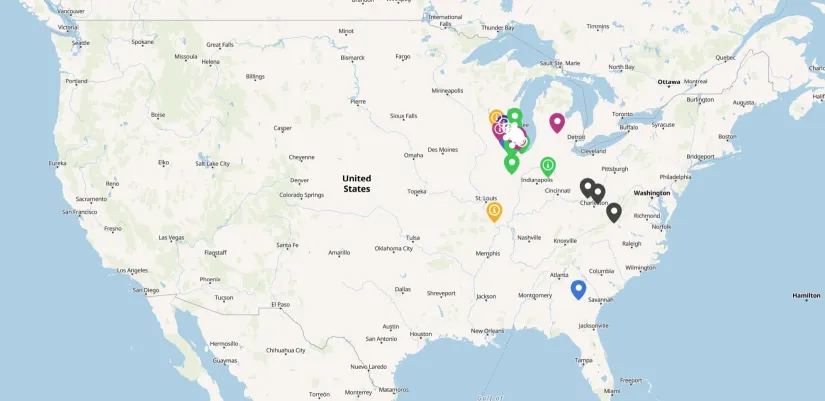Have you ever walked into a place and felt an overwhelming sense of déjà vu? Like the walls themselves were whispering secrets from the past? What if certain buildings, landscapes, or even a simple room could actually “record” moments of emotional intensity—and replay them for anyone who steps inside?
Seems impossible? Well, not according to the Stone Tape Theory. It’s a paranormal concept that fascinates believers and, yet, infuriates skeptics.
The theory itself seems straightforward. But the implications are anything but simple.
Could emotional energy be impressed on the environment in a way that survives long after the people themselves are gone? If that’s possible, are ghosts really conscious spirits? Or are they just echoes of the past, repeating like an old tape loop?
In this article:
What Is the Stone Tape Theory?
The Stone Tape Theory suggests that certain locations can “record” intense emotional or traumatic events. These events can then be replayed, much like a videotape.
The theory operates under the premise that emotional energy (particularly during stress or trauma) can be imprinted onto the physical environment. This energy imprint allegedly becomes embedded in materials—like stone, wood, or other building materials.
And then, it may later be “replayed” by sensitive individuals or under specific environmental conditions.
Because of these concepts, the Stone Tape Theory is often linked to residual hauntings and residual energy. You know, those “ghosts” that are not really ghosts but rather appear on a loop—repeating the same actions, unaware of the living.
But unlike traditional ideas of spirits, these imprints aren’t thought to be conscious entities. Instead, they’re a kind of echo or recording of the past, playing back when conditions are just right.
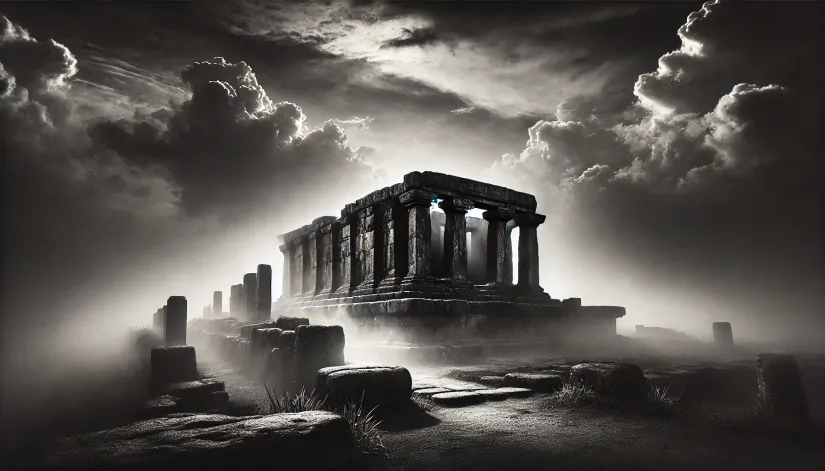
The “Place-Memory” History and Origins
The idea behind the Stone Tape Theory isn’t new. In fact, it’s ingrained in older concepts such as “place-memory” and “energy imprinting,” two ideas that have fascinated humans for centuries.
The ancient Egyptians, Greeks, and Celts… all believed that certain places have a particular “memory” that gives them power.
As early as 3000 BCE, the ancient Egyptians believed temples and tombs were imbued with sacred energy, especially those dedicated to powerful deities (like Osiris) or revered pharaohs.
The Greeks, around the 8th century BCE, had similar beliefs. For them, sacred sites like the Oracle of Delphi were charged with profound spiritual energy. There, Pythia (a high priestess) could communicate directly with the gods.
From around 500 BCE, the Celts considered locations like stone circles or burial mounds—such as Stonehenge or the Newgrange mound—to hold significant power, too. These sites were often tied to ancestral spirits or events of great importance.
So, even back then, people strongly believed that certain sites held sacred or haunted energy, often linked to traumatic or significant events that left a lasting impact on the land.
Charles Babbage
In 1837, Charles Babbage—yes, the same guy known as a pioneer of computing—speculated that human actions might leave a permanent imprint in the physical world. This notion resonates strongly with the Stone Tape Theory.
Babbage believed that no word or action ever truly vanishes but instead leaves an indelible mark on the universe. He even proposed that, theoretically, these records could be accessed or perceived.
H.H. Price
H.H. Price, a philosopher and parapsychologist, took these ideas even further in the early 20th century, particularly around the 1930s. He developed the concept of “place-memory.”
Price suggested that specific locations could retain traces of past events. And individuals with heightened psychic sensitivity might be able to perceive these traces.
And he was not alone. In fact, his work (and many of his theories) was part of a broader movement in the early 20th century. This was when spiritualism and paranormal exploration were gaining popularity—partly driven by the aftermath of World War I (1914-1918) and the collective search for meaning and connection with those who had passed on.
T.C. Lethbridge
Then came T.C. Lethbridge, an archaeologist and parapsychologist active in the mid-20th century, especially during the 1950s and 1960s.
Lethbridge’s interest in dowsing and his belief that energy fields could be detected by certain people led him to suggest that physical objects and sites could store emotional energy.
He even attempted several experiments. For example, Lethbridge claimed that by using a pendulum, he could detect different types of energy near ancient burial sites.
However, his methods were controversial and dismissed by mainstream science, which demanded more empirical evidence and controlled experimentation. Nevertheless, he found a receptive audience among those intrigued by the paranormal and alternative science.
Society for Psychical Research
The idea of energy imprints also intersected with psychical research conducted by organizations like the Society for Psychical Research (SPR), founded in 1882.
The SPR was one of the first groups to systematically investigate paranormal phenomena, including hauntings and apparitions. Their early investigations into haunted locations often described repetitive, non-interactive apparitions.
This concept shares similarities with the idea of psychometry. (Psychometry means “measuring the soul” and was proposed in 1842 by Joseph Rodes Buchanan.)
Simply put, specific individuals may gain information about a person or place by merely touching an associated object. And, with the right techniques, these imprints could be unlocked and interpreted.
But it wasn’t until December 25, 1972, that the Stone Tape Theory truly gained attention thanks to the BBC play The Stone Tape. The play by Nigel Kneale depicted a group of researchers investigating a haunted house and discovering that the haunting was actually a recording embedded in the stone walls.
This dramatization brought the concept into the public eye. Since then, the term “Stone Tape Theory” has been used to describe this type of haunting.
Stone Tape Theory Examples
While there is no definitive proof of the Stone Tape Theory, numerous haunting cases seem to fit its framework. Here are a few notable examples:
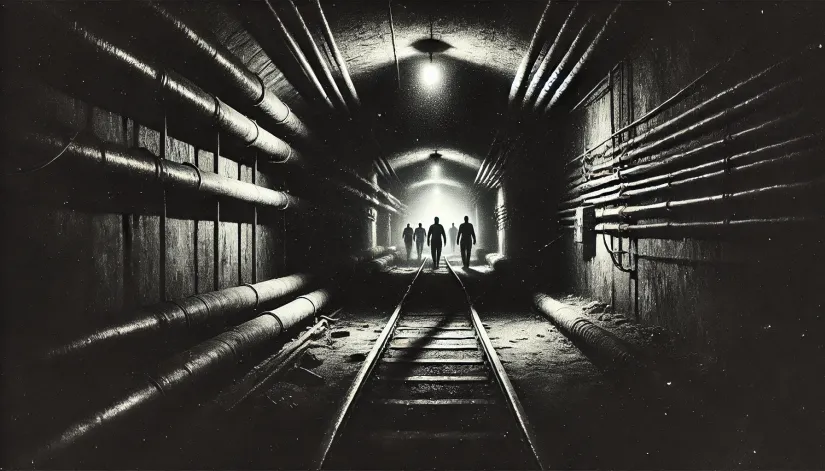
The Drakelow Tunnels
The first example that comes to mind is the Drakelow Tunnels in Worcestershire, England. It’s not a “mainstream” location, but those passionate about hauntings and the paranormal probably heard about it.
Initially, these tunnels were a military facility during World War II, and later they became a nuclear bunker. Today, the Drakelow Tunnels are among the most haunted locations in the UK.
Over the years, visitors have reported footsteps, shadowy figures, and feeling intense dread. It really feels like that wartime energy might have left its mark.
The deep, isolated tunnels seem like a perfect spot for emotional energy to stick around and replay itself—especially when the conditions are just right.
Pontefract’s 30 East Drive
If haunted houses are your thing, you’ve probably heard of 30 East Drive in Pontefract, UK. It’s said to be one of the most haunted houses around. Folks have heard strange noises, seen objects move on their own, and even witnessed apparitions. It’s got all the classic spooky stuff.
Many people think it’s residual—the energy from past events just replaying itself. The place even had poltergeist activity in the 1960s, which adds to the idea that something got imprinted into those walls, replaying again when the right triggers are in place.
The Ancient Ram Inn
I think the Ancient Ram Inn in Gloucestershire, England, can be another excellent example of a Stone Tape Theory-related event.
This place has it all—stories of ghostly monks, crying children, witchcraft, pagan rituals, and even murder. No wonder guests have reported some pretty intense hauntings.
The building’s violent and dramatic history makes it a perfect candidate for emotional energy to leave its mark. Imagine walking through a place with that kind of past—no surprise people still pick up on those eerie vibes.
Chillingham Castle
Chillingham Castle, up in Northumberland, is another classic haunting spot. It’s famous for the “Blue Boy” sightings, who’s said to appear in one of the castle’s bedrooms. Interestingly, the sightings here are repetitive, like a scene on a loop.
Plus, the history here is dark, full of battles, imprisonments, and executions. All the “perfect conditions” for a Stone Tape Theory event.
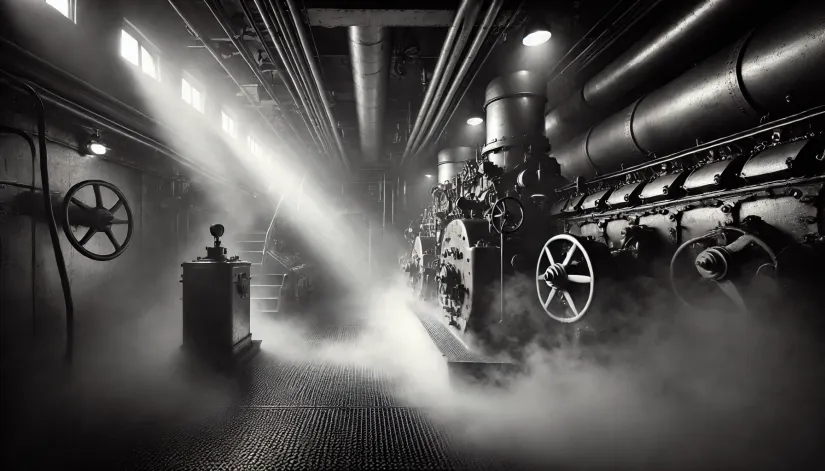
The Queen Mary
Last but not least, we’ve got the Queen Mary, the retired ocean liner turned hotel in California. This ship has a long, intense history—used as a troopship in World War II, and now, it’s home to countless ghostly tales.
Guests and staff have reported apparitions and strange noises, especially in areas tied to trauma, like the engine room or swimming pool. The ship’s confined spaces and wartime past might have trapped those emotions, replaying them when conditions were right.
It’s just the kind of place where you’d expect the past to linger.
Scientific Criticism
Speaking of criticism, one of the main objections to the Stone Tape Theory is that there’s no scientifically plausible mechanism for how emotional energy could be recorded and replayed.
Unlike magnetic tape or digital recordings, we don’t have any known physical process that allows emotional events to imprint onto inanimate materials. And we can’t easily test it either.
Richard Wiseman (a psychologist who’s done a lot of research into paranormal phenomena) has pointed out this issue, too. The same is true for the renowned physicist Brian Cox, who has been vocal about dismissing the Stone Tape Theory, arguing that it lacks any foundation in established physical laws.
In fact, many label the Stone Tape Theory as pseudoscience. There are no controlled studies or repeatable experiments that validate the concept of emotional energy being stored and replayed by the environment.
However, there have been some attempts to test it. For instance, in the 1980s, SPR researchers conducted multiple investigations into alleged hauntings.
What they were looking for? Any link between environmental conditions and paranormal activity. Maybe temperature could play a role in residual hauntings? Or perhaps the humidity? Or certain materials are more prone to “store” the residual energy.
Unfortunately, SPR couldn’t find any conclusive evidence.
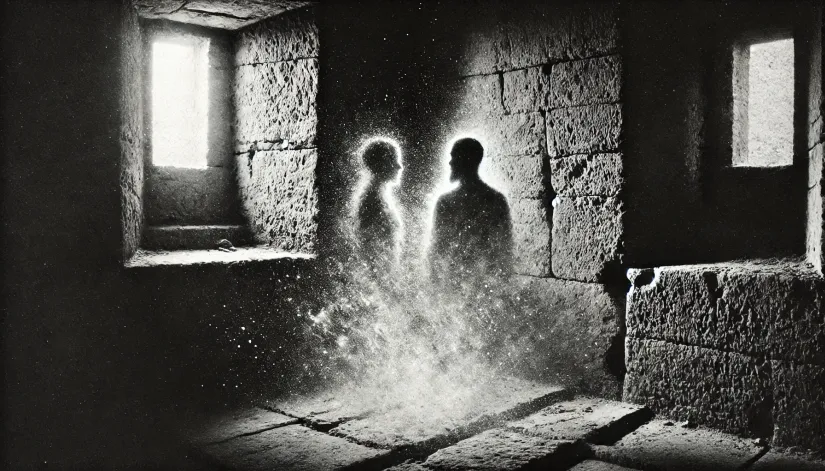
Conclusion
Why is there more activity associated with one location and not another? Why are some places haunted and not others? Why do different people from entirely different backgrounds or even time periods often share the same experiences at the same location?
No matter how much I don’t like it, I have to admit: we don’t know. We don’t know the answer to any of these questions. All we can do is assume and try to put the puzzle pieces together.
Can the Stone Tape Theory explain the residual hauntings? Well, yes. The problem is we can’t prove the Stone Tape Theory—at least, not yet. After all, until recently, we couldn’t explain quantum entanglement, how particles can interact instantaneously across vast distances, or why quantum particles seem to exist in multiple states at once.
Those ideas seemed impossible. But now, they’re part of mainstream science. So, there’s hope that we might someday unlock the secrets of these mysterious hauntings, too.
Until then, we observe, document, and keep asking questions. We push the boundaries, test the limits, and stay curious. We keep digging, and maybe—just maybe—one day we’ll find that missing piece of the puzzle.
And when we do, it could change everything.

